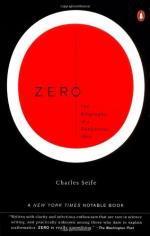
|
| Name: _________________________ | Period: ___________________ |
This quiz consists of 5 multiple choice and 5 short answer questions through Chapter 6.
Multiple Choice Questions
1. The Renaissance roughly spanned the period of what centuries?
(a) The 16th to the 19th Centuries.
(b) The 10th to the 12th Centuries.
(c) The 14th to the 17th Centuries.
(d) The 9th to the 14th Centuries.
2. Where was Gottfried Wilhelm Leibniz from?
(a) Belgium.
(b) Great Britain.
(c) Germany.
(d) France.
3. When the Indians adopted a Babylonian style number system, its base was what, according to the author in Chapter 3, “Nothing Ventured”?
(a) 5.
(b) 20.
(c) 60.
(d) 10.
4. What mathematical term refers to a function giving an exact pairing of the elements of two sets?
(a) Infinity.
(b) Derivation.
(c) Injection.
(d) Bijection.
5. The introduction of nothingness and zero into Jewish theology led in part to what offshoot Jewish mysticism?
(a) Hasidism.
(b) Orthodoxy.
(c) Kabbalism.
(d) Sufism.
Short Answer Questions
1. When did Nicholas of Cusa live?
2. What branch of mathematics are the ancient Egyptians credited with creating in order to successfully build objects to block the flooding of the Nile River each year?
3. Newton's notation for differentiation uses what symbol placed over a function name to denote the time derivative of that function?
4. What does the author refer to as “zero’s twin” in the book?
5. What god within Hinduism represents both creator and destroyer?
|
This section contains 208 words (approx. 1 page at 300 words per page) |

|




